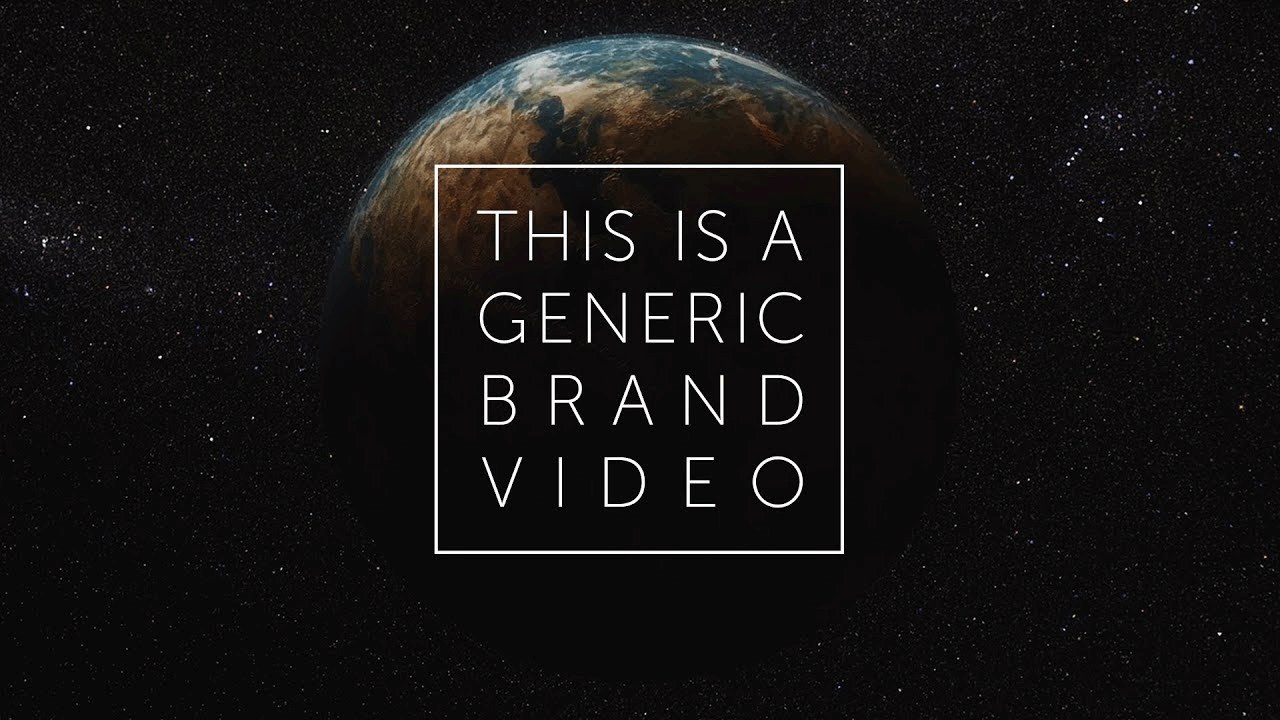The internet in general and video in particular have made HUGE strides in the 10 years between 2010 and 2019.
Consider for a second, that when that decade started, YouTube was equivalent to a kindergartener, not yet the world’s second largest search engine.
In that space, we’ve seen some of the best video trends yet—and we’ve seen some of the worst video trends, right out of a MySpacer’s fever dream.
Let’s take a look at the good, the bad, and the ugly of video trends from the 2010s and what it teaches us for the years ahead.
9 of the Very Best Video Trends of the 2010s
The 2010s saw huge strides forward in the online video world and, with it, some trends that pushed that potential to its fullest.
1. Video for Everyone
The accessibility of video became exponential over the course of the decade.
And it’s all down to one high-impact video trend: Equipment and tools for capturing, editing, and sharing video became much cheaper and significantly easier to use.
This made video more and more accessible for everyone—not only individuals, but brands as well. Not only was this a significant video production trend, it also democratized the video creation process by opening it up to non-technical participants.
Plus, the proliferation of video-friendly social platforms made video more prevalent across the web.
2. The Proliferation of Social Video
The 2010s did more than just expand video creation beyond production teams. With the rise of video sharing capabilities on social platforms, this decade was also the one where it truly began to feel like video was everywhere.
Not only did networks like Facebook double-down on their investments in video (in the form of algorithm updates and big bets on live streaming), but there was also a proliferation of new visual-first social networks tailor-made for video: Pinterest (2010), Instagram (2010), Snapchat (2011), Vine (2013), TikTok (2016), just to name a few.
And, of course, I’d be remiss not to mention YouTube, which positively exploded over these 10 years, rising to be the second largest search engine in the world, not to mention a massively popular video discovery and social platform.
Much of this led to one of my other favorite social media video trends…
3. The Vertical Video Revolution
Long considered a faux pas made by amateur videographers, vertical video suddenly became the format du jour in the latter half of the 2010s.
This mobile video trend was helped along by the advent of ephemeral “Stories” formats on social platforms.
After rising to prominence on Snapchat, the Stories format was quickly adopted by other platforms (Instagram, Facebook, WhatsApp).
This mobile-first short-form mix of vertical video and images has been nothing short of revolutionary. But why? It’s a near-magic combination of content that feels real-time, that’s made for mobile, and that encourages creators to be scrappier, rawer, and more authentic.
Couple that with the format’s low barrier to entry and bingeable nature and you’ve got a recipe for content that brands and consumers alike love.
4. The Evolution of Video Storytelling
Brands really upped their game in the 2010s, moving from simply putting TV commercials online to creating videos that tell stories.
This shift to video content that was more about narrative than sales pitches helped brands build trust with their audiences, making it a video marketing trend with staying power.
5. The Rise of Niche Video Content
Video has moved from being a broad strokes, spray-and-pray medium to one that’s rich in niche content. And not only niche-specific content, but content that’s not afraid to go long-form because it doesn’t have to pander to a broad audience.
If you’re interested in it, there’s a video about it. Guaranteed.
Want a 22-minute video of someone solving a puzzle box? Got it. Looking for a six-minute tutorial about moss removal? It exists. Want to watch a seven-minute deep-dive on video SEO or video analytics? Of course you do, and it’s out there.
6. The Shift to Lower-Funnel Video
Video has long been considered a great top-of-funnel asset. In the 2010s, businesses finally started to see the potential it held for later on in the buying cycle.
It became a medium more widely used to educate buyers and answer questions they have in order to push them further along in their journey.
Video demos and case study videos are now among the most popular types of video for businesses, according to our Video in Business Benchmark Report.
7. The Expansion of Video Beyond Marketing
Digital video, like its TV commercial precursors, has long been the sole domain of the marketing team.
No more.
Sales teams have taken to video like wildfire, adding personal, one-to-one video voicemails to their outreach cadences and arsenal of engagement tactics to build relationships and engage prospects throughout the deal cycle. Recipients have taken notice.
Add in the increasing ease of sharing marketing-created videos, and sales teams have become a video force to be reckoned with. (They’re not the only ones, but more on that in our 2020 Video Trends Report…)
8. The Growth of Readable Video
A few major forces came together to result in this video trend.
First, there was the rise of video on social networks. Second, was the increasing propensity of social media users to access those platforms from mobile devices. This naturally led to an increase of videos watched without sound.
Thus, the explosion of captions. Not only do captions make video content more accessible, they also make video easier for all users to consume anywhere, on any device, regardless of whether they want to turn the sound on or not.
From captions came a new style of video with the text baked right into the video file as part of the experience. Popular on social, these are commonly known as text overlay videos. Some were silent, many had accompanying music should a viewer choose to listen as well as watch.
9. The Introduction of Choose-Your-Own Adventure Style Video Content
Like choose-your-own-adventure books before it, this style of interactive video allows users to have a choice over what happens in the content they’re watching.
Not only did brands try this out in their digital video content, it also made a huge splash on platforms like Netflix, which tested out the capabilities in both TV and movie form.
This online video trend showed just how much is possible with interactive content and made an already engaging medium even tougher to ignore.

Discover the Top Video Trends for 2020
 Get the insights you need to craft a winning video strategy. Read the 2020 Video Trends Report.
Get the insights you need to craft a winning video strategy. Read the 2020 Video Trends Report.
Get the Report
5 of the Absolute Worst Video Trends of the 2010s
You really can’t reminisce about the highest highs without reminding yourself of the lowest lows. These were the worst video trends the 2010s could offer up to businesses and consumers alike.
1. Auto-Playing Video Ads
There’s a reason MySpace isn’t the dominant social media platform anymore. People don’t love landing on a webpage only to be met with an auditory assault.
Auto-playing video ads, while likely appealing to certain brands for obvious reasons, present a terrible experience for users—especially the ones that pin themselves to the corner of your screen as you scroll through a website.
When it comes to video advertising trends, this is unarguably one of the worst.
2. Generic Brand Videos
Video offers a ton of potential for creative storytelling. Unfortunately, in the 2010s, many brands fell into the trap of making videos that had the same generic upbeat background music, pseudo-exciting stock video footage, and generic motto.
This became so prolific that the clever folks over at Dissolve actually made a spot-on (and award-winning) parody: “This is a Generic Brand Video” (which, if you haven’t already seen it, is well worth a watch).

3. Dangerous Viral Video Challenges
Three words: Tide Pod Challenge.
While this was one of the most highly publicized examples of a video-based challenge that was just plain dangerous, it’s far from the only one.
In addition to eating laundry detergent, viral video challenges have encouraged hapless participants completing everyday tasks blindfolded (Bird Box Challenge, inspired by the Netflix horror film), jumping out the window of a moving car (#InMyFeelingsChallenge, inspired by a Drake music video), or dump boiling water on yourself or an unsuspecting friend (Hot Water Challenge, origins unclear).
The 2010s held no shortage of dangerous viral video trends.
4. Clickbait Video Thumbnails (Enough Said)
Any video maker or viewer worth their salt knows that the thumbnail can make or break the video.
But with great power, and all that. Unfortunately, the power of video thumbnails is one that was oft abused in the 2010s. Like the clickbait headlines that filled social feeds, so too did thumbnails that misled potential viewers about their contents.
5. 360-Degree Videos
This isn’t so much a worst video trend as it is a most disappointing video trend. While the possibilities associated with 360 were interesting, practical use cases were thin on the ground.
As an interactive format, 360-degree videos still hold so much unrealized potential.
The 2020s may hold something different for this style of video, but as far as the 2010s are concerned, this supposed video production trend quietly fizzled out.

Discover the Top Video Trends for 2020
 Get the insights you need to craft a winning video strategy. Read the 2020 Video Trends Report.
Get the insights you need to craft a winning video strategy. Read the 2020 Video Trends Report.
Get the Report
The post 14 of the Best and Worst Video Trends From the 2010s appeared first on Vidyard.
Read more: vidyard.com









